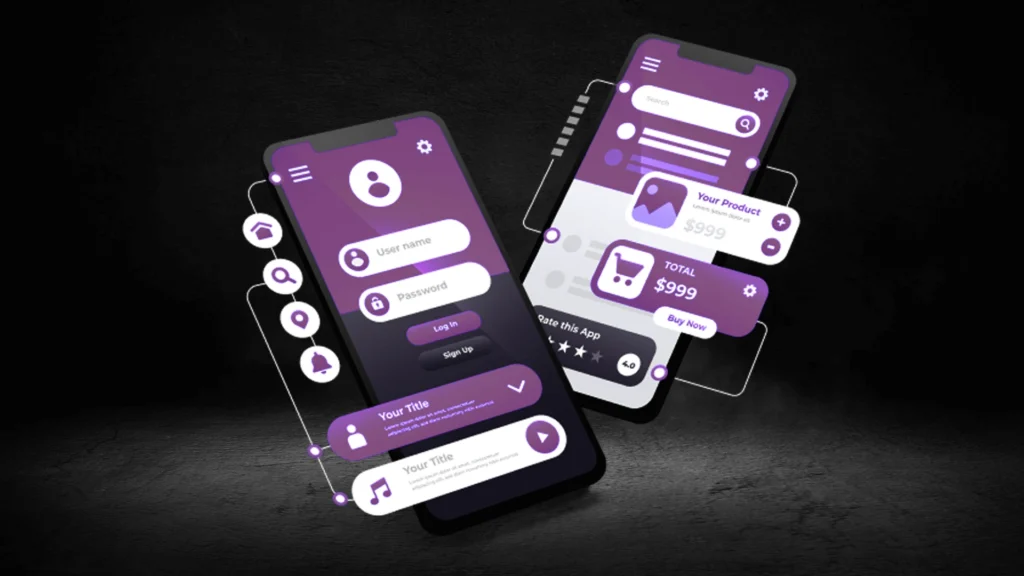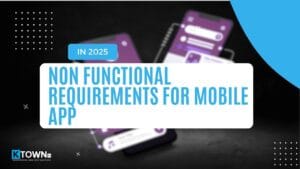The Journey of App Development
Imagine you’re launching a new mobile app in 2025. You’ve gathered a talented team of developers, designers, and product managers, and your app’s core features are on point. You’re confident about its functionality, but then you realize there’s something crucial you’ve overlooked: Non-Functional Requirements (NFRs).
Let’s take an example from the real world. Consider a popular e-commerce mobile app that has just been launched with all the right features—easy navigation, a seamless checkout process, and personalized recommendations. However, the app suffers from poor performance during peak shopping hours, draining the device’s battery and becoming unresponsive. Users begin abandoning their carts, leading to a drop in sales.
This scenario illustrates why Non-Functional Requirements for mobile apps are as important as their functional counterparts. NFRs focus on the quality attributes that ensure the app performs optimally, scales efficiently, and meets user expectations.
In this blog, we’ll dive into the key Non-Functional Requirements (NFRs) for mobile apps in 2025, helping you build better, more reliable applications.
What Are Non-Functional Requirements for Mobile Apps?
Non-Functional Requirements define the “how” of an app rather than the “what.” They focus on aspects such as performance, security, usability, and scalability. In the rapidly evolving mobile ecosystem of 2025, these requirements are crucial for delivering smooth, reliable, and secure user experiences.
Key Non-Functional Requirements for Mobile Apps in 2025
1. Performance
In 2025, users expect lightning-fast performance from mobile apps. Whether it’s launching an app, scrolling through content, or making transactions, performance is key to user retention. High-speed performance ensures that apps remain responsive and interactive.
- Expected Load Time: App should launch in under 2 seconds.
- Response Time: Interaction time should not exceed 100ms.
- Smooth Interactivity: App should deliver real-time responses for users, especially for apps requiring constant data updates (e.g., social media or live sports apps).
2. Scalability
The app must be able to handle increasing numbers of users and data without performance degradation. Scalability is especially crucial for apps expected to grow exponentially, like social networks, e-commerce platforms, or gaming apps.
- Support for Growth: The app should scale both horizontally and vertically to accommodate future growth in users, traffic, and data.
- Load Balancing: Integrating cloud solutions such as AWS or Google Cloud to distribute the load effectively across servers.
3. Security
Mobile security is no longer optional—it’s a must-have. As mobile apps increasingly handle sensitive personal data (banking, health information, etc.), robust security mechanisms are essential to protect user privacy.
- Data Encryption: Encrypt data at rest and in transit using industry-standard encryption methods (e.g., AES-256).
- Authentication & Authorization: Implement advanced authentication (e.g., biometrics, multi-factor authentication).
- Regular Security Updates: Ensure that security patches are regularly applied to mitigate evolving threats.
4. Usability
A mobile app’s user interface (UI) and user experience (UX) play a pivotal role in its success. In 2025, users expect apps to be intuitive, responsive, and easy to use. Poor usability can result in high uninstallation rates, even if the app’s core functionality is solid.
- Ease of Use: Focus on intuitive navigation and minimal steps to complete tasks.
- Responsive Design: Ensure compatibility with a wide range of device types and screen sizes.
- User-Centered Design: Regularly test the app with real users to gather feedback and iterate on designs.
5. Availability
In today’s 24/7 digital world, users expect apps to be available whenever they need them. Downtime can severely affect user trust, especially for services such as banking, messaging, or shopping apps.
- Uptime Percentage: Aim for 99.9% availability, with minimal downtime.
- Redundancy: Ensure redundancy in critical systems, such as servers and databases, to avoid service interruptions.
6. Battery Efficiency
With mobile apps consuming a significant amount of battery life, especially during long sessions or resource-heavy tasks, energy efficiency has become a crucial aspect. In 2025, battery optimization is a key non-functional requirement for mobile apps.
- Low Power Consumption: Optimize the app to use minimal battery resources during idle time and background processes.
- Resource Management: Efficiently handle CPU, network, and memory usage to ensure battery longevity.
7. Compliance
With increasing regulations, especially concerning data privacy (e.g., GDPR, CCPA), it is crucial to ensure that your app is compliant with the latest standards.
- Privacy Policies: Incorporate clear privacy policies and inform users about data usage.
- Data Retention & Access: Ensure compliance with local data storage laws and user consent protocols.
8. Internationalization & Localization
If you’re targeting users across different countries, internationalization and localization are key. Your app should be able to adapt to different languages, regions, and cultural norms.
- Multilingual Support: Include features that support multiple languages and regional settings.
- Cultural Sensitivity: Tailor the content and design elements to meet the cultural preferences of different user bases.
9. Interoperability
Mobile apps often need to integrate with other systems, platforms, or devices. Interoperability ensures that the app functions seamlessly with third-party services like payment gateways, social media platforms, or cloud storage.
- Third-Party API Integration: Ensure that the app can smoothly interact with external APIs and services.
- Cross-Platform Functionality: For apps running across iOS, Android, or Web, ensure consistent functionality.
Conclusion: Meeting Non-Functional Requirements for Mobile Apps in 2025
As we approach 2025, building a mobile app goes beyond just functional features. It’s about creating a seamless, fast, and secure experience that users can trust. Non-Functional Requirements (NFRs) are the backbone of this user experience, dictating how the app performs under pressure, how secure it is, and how easily it scales.
For businesses looking to create successful mobile apps, focusing on NFRs can make the difference between success and failure in the competitive mobile app market. Keeping these requirements in mind will ensure your app not only meets user expectations but exceeds them, fostering greater engagement and trust.
Are you looking to build a mobile app that meets all these standards? KTOWN I/O specializes in developing high-performance, secure, and user-friendly mobile apps for businesses of all sizes. With years of experience in the industry, KTOWN I/O ensures your mobile app doesn’t just work—it thrives.


